(!)NOTE : Windows 7 users won’t be able to use some latest features of eCatalog/WOS since Microsoft is ending support for Windows 7 on 14 Jan, 2020. Please upgrade your system for uninterrupted services.
- Notice of End of Sales for Economy Series Pneumatic Equipment Category. More information.
IGUS Cable Carriers(Cable Insertion Type:Snap (Attached/Detached))
Brand |
|
|---|---|
| CAD |
|
| Days to Ship |
|
1 items
- Sort By
-
You can add up to 6 items per a category to the compare list.
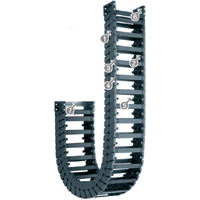
Energy Chain Pivot-less (Link-less) Type Large (E6) E6.52 Type
IGUS
Usable in clean rooms. No pivot for lower noise and vibration (E6.52)
[Features]
· There is no part connecting the pivot and opening hole
· Internal stopper function
· Large slide surface
· Short pitch, low noise, smooth running.
· Large internal height.
· Modular, for easy extending and shortening.
· KMA mounting bracket for free selection of the mounting surface
· The mounting bracket can be attached to the comb-tooth cable clamp
· Price index C type rail can be assembled (option)Inner Height H1(mm) Inner Width W1(mm) Bending Radius R(mm) Properties Cover Type Type Pitch P(mm) Number of Divided Sections inside Carrier Cable Insertion Type Max. Cable O.D. Dp(Ø) Cable Insertion Surface Operating Speed(m/s) 52 40 ~ 200 75 ~ 250 Standard / Low Vibration Standard Square Shape 30 Not Provided Snap (Attached/Detached) 46 Both Surfaces 10 Days to Ship: 19 Day(s) or more  19 Day(s) or more
19 Day(s) or more
| Brand |
|---|
| Product Series |
| From |
| Days to Ship |
| Inner Height H1(mm) |
| Inner Width W1(mm) |
| Bending Radius R(mm) |
| Properties |
| Cover Type |
| Type |
| Pitch P(mm) |
| Number of Divided Sections inside Carrier |
| Cable Insertion Type |
| Max. Cable O.D. Dp(Ø) |
| Cable Insertion Surface |
| Operating Speed(m/s) |
You can add up to 6 items per a category to the compare list. | |
| Brand | IGUS |
| Product Series | Energy Chain Pivot-less (Link-less) Type Large (E6) E6.52 Type |
| From | - |
| Days to Ship | 19 Day(s) or more |
| Inner Height H1(mm) | 52 |
| Inner Width W1(mm) | 40 ~ 200 |
| Bending Radius R(mm) | 75 ~ 250 |
| Properties | Standard / Low Vibration |
| Cover Type | Standard |
| Type | Square Shape |
| Pitch P(mm) | 30 |
| Number of Divided Sections inside Carrier | Not Provided |
| Cable Insertion Type | Snap (Attached/Detached) |
| Max. Cable O.D. Dp(Ø) | 46 |
| Cable Insertion Surface | Both Surfaces |
| Operating Speed(m/s) | 10 |
Loading...
Configure
Specification/Dimensions
-
Inner Height H1(mm)
-
Inner Width W1(mm)
-
Bending Radius R(mm)
-
Properties
- Standard
- Low Particle Generation
- Low Noise
- Low Friction
- Low Vibration
- High Endurance
-
Cover Type
-
Type
-
Pitch P(mm)
-
Number of Divided Sections inside Carrier
-
Cable Insertion Type
-
Max. Cable O.D. Dp(Ø)
-
Cable Insertion Surface
-
Operating Speed(m/s)
Narrow search by specifying Manufacturer
Related Categories to Cable Carriers
FAQ Cable Carriers
- Question: What are cable carriers, and what are they used for?
- Answer: Cable carriers, also known as drag chains or energy chains, are flexible systems designed to protect and manage cables, hoses, fiber optic cables and hydraulic lines in dynamic applications. They ensure smooth motion and prevent damage in machines, robotic systems, and industrial equipment.
- Question: What are the different types of cable carriers?
- Answer: There are several types of cable carriers, including:
Flexible Cable Carriers: These are highly flexible and can bend in multiple planes, making them ideal for applications with frequent movement.
Rigid Cable Carriers: These are more rigid and provide excellent protection for cables in harsh environments.
Hybrid Cable Carriers: These combine the flexibility of flexible carriers with the rigidity of rigid carriers, offering a balance of both.
Trunking Cable Carriers: These are enclosed systems that protect cables from environmental factors like dust, moisture, and impact. - Question: What materials are cable carriers made of?
- Answer: Cable carriers are typically made from:
• Plastic : Lightweight and corrosion-resistant, suitable for most applications.
• Steel or aluminum: Designed for heavy-duty operations and environments with extreme temperatures or chemicals. - Question: What is the difference between cable carriers and cable conduits?
- Answer: Cable carriers are designed for dynamic applications where cables need to move repeatedly, such as in machinery and robotics. In contrast, cable conduits are used for static or stationary cable protection.
- Question: How do I choose the right cable carrier?
- Answer: To select the appropriate cable carrier, consider the following factors:
Cable Type and Size: Determine the type and diameter of the cables to be routed.
Movement Requirements: Assess the frequency and range of motion.
Environmental Conditions: Consider factors like temperature, humidity, and exposure to chemicals.
Installation and Maintenance: Evaluate the ease of installation and maintenance.


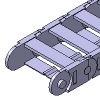
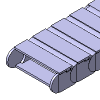

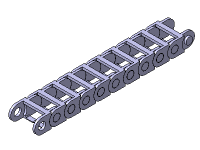



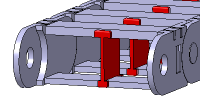
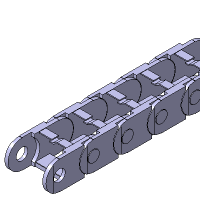
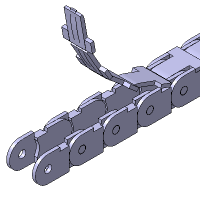

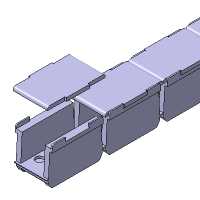
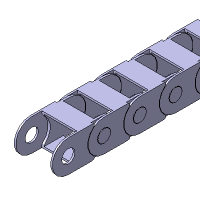



How can we improve?
How can we improve?
Thank you for your time.
Your feedback is essential for our continuous improvement
Privacy Policy
Thank you for your cooperation.
Thank you for your time.
Your feedback is essential for our continuous improvement
Please use the inquiry form.
Privacy Policy